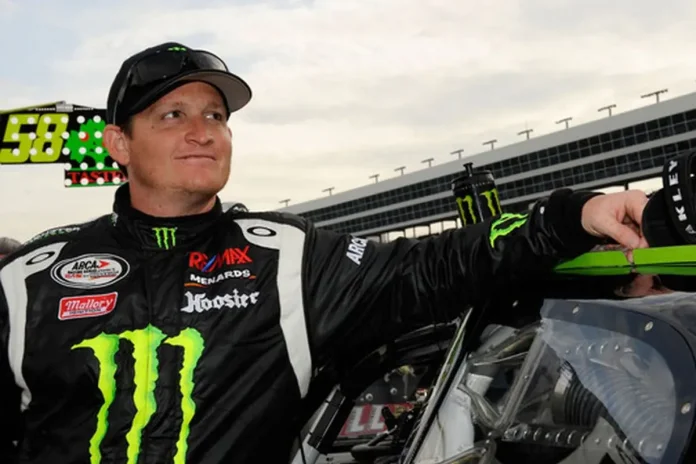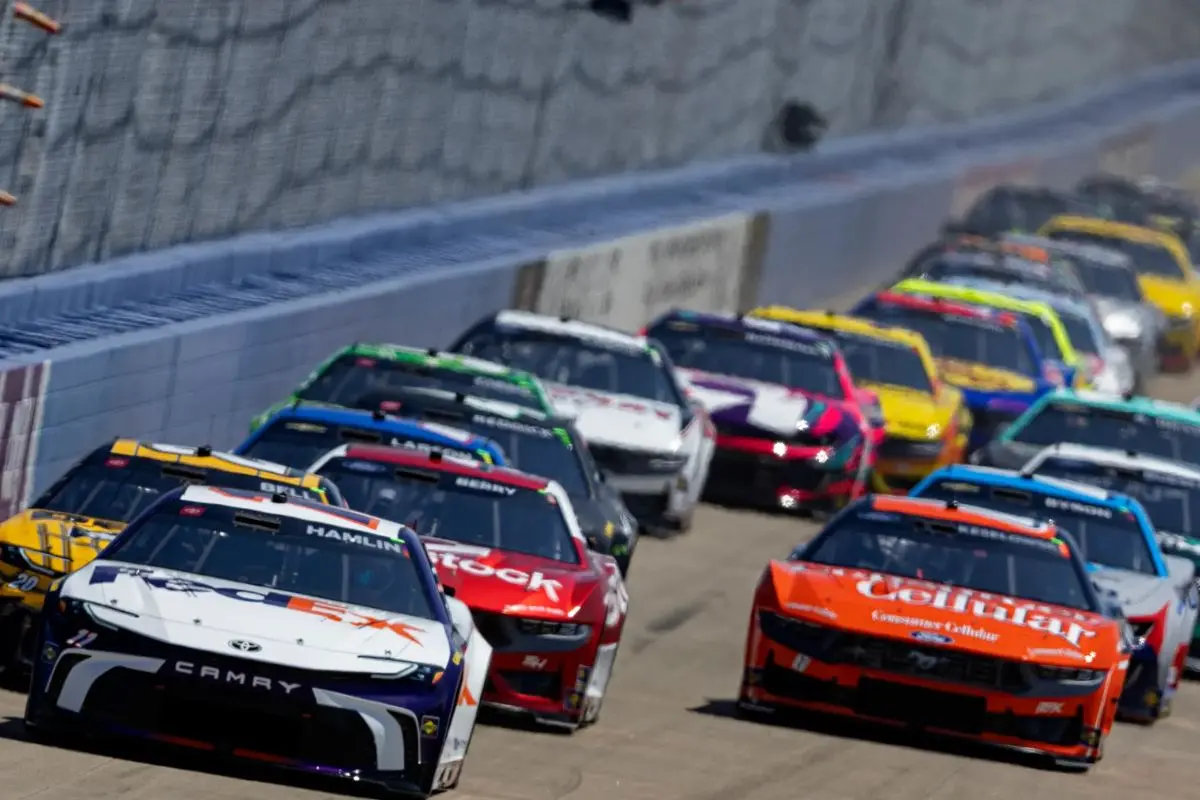Ricky Carmichael exposes NASCAR’s Pay-to-Drive reality through his own experience in the sport, showing how financial barriers can hold back talented drivers. Despite a strong background in motocross and good results in the NASCAR Truck and NASCAR Xfinity Series, Ricky Carmichael struggled to find sponsorship. In NASCAR, money often matters more than skill, making it harder for up-and-coming drivers to get their chance. This system
Key Highlights
- Ricky Carmichael faced significant challenges in NASCAR due to the pay-to-drive model, which prioritized funding over driving skill.
- The disparity in financial backing limited opportunities for talented drivers, undermining the meritocracy within the sport.
- Securing sponsorship proved difficult, impacting Carmichael’s competitiveness and overall experience in NASCAR.
- Frustrations arose from the unpredictable nature of NASCAR, complicating performance consistency and success across races.
- Financial difficulties ultimately led to team dissolution, highlighting the importance of sustainable funding in motorsport success.
Ricky Carmichael’s Transition from Motocross to NASCAR
Switching from one competitive arena to another can be a formidable challenge, and Ricky Carmichael’s move from motocross to NASCAR exemplifies this reality. Widely regarded as the greatest of all time in motocross, Carmichael made a bold shift when he debuted in the ARCA Menards Series with Kevin Harvick Inc. His decision to enter NASCAR marked a meaningful change, not merely in the type of vehicle he would be piloting, but in the fundamental skills and strategies required to compete effectively.
Carmichael’s background in motocross, characterized by agility, balance, and split-second decision-making, did not seamlessly translate to the complexities of stock car racing. The physical demands and racing dynamics of NASCAR are distinct, requiring a different set of competencies, including high-speed drafting and tire management.
Despite these challenges, he committed to the sport, initiating his Truck Series career in 2009 and racing for three full seasons before concluding his NASCAR experience in 2011.
In recent discussions with Kevin Harvick, Carmichael reflected on the hurdles he faced during this change. These included not only the specialized learning curve but also the financial realities of NASCAR, where sponsorship and funding play crucial roles in success.
While Carmichael’s legendary status in motocross remains unchallenged, his NASCAR experience highlights the difficulty of moving between highly specialized competitive arenas, revealing the intricate complexities that define each sport.
Ricky Carmichael’s NASCAR Record and Accomplishments
Ricky Carmichael’s foray into NASCAR, while not as decorated as his motocross career, still highlights significant accomplishments that reflect his resolve and competitive spirit. Shifting from two wheels to four, Carmichael accepted the challenges of stock car racing, demonstrating a commendable level of adaptability and ambition.
Over three seasons in the NASCAR Truck Series, Carmichael participated in 68 races, achieving four top-five finishes and 18 top-10 placements. Particularly, his performances at iconic venues like Dover and Talladega illustrated his capability, with a commendable fourth-place finish serving as a personal best. His average finishing position of 16.9 emphasizes a consistent competitive presence, leading 40 laps during his tenure, a crucial metric that reflects his ability to contend for the front.
In addition to his Truck Series endeavors, Carmichael made eight starts in the NASCAR Xfinity Series, racing with teams such as Braun Racing and Turner Motorsports. His best finish, ninth place at Road America, demonstrated his potential to compete against seasoned peers, albeit in a limited capacity.
Carmichael’s NASCAR record, while modest compared to his motocross accolades—15 AMA Championships and 150 wins—shows his resolve to excel in a new arena. Each lap he completed and every position gained contributed to his legacy as an athlete willing to push boundaries.
Challenges with Sponsorship and NASCAR’s Pay-to-Drive System
The challenges of securing sponsorship in NASCAR have become increasingly pronounced, particularly in view of the sport’s evolving financial landscape. In an environment where the disparity between funding sources is evident, drivers often find themselves at the mercy of their sponsors’ financial capabilities. Larger sponsors provide notable resources that raise drivers to prestigious teams like Stewart-Haas or Hendrick Motorsports, while smaller sponsors typically align with backmarker teams, resulting in less competitive equipment and diminished opportunities for success.
Carmichael’s experience demonstrates this harsh reality. Having shifted from motocross, where talent often supersedes financial backing, he encountered a sharply different ethos in NASCAR. On Kevin Harvick’s podcast, he articulated the frustrations stemming from the sport’s pay-to-drive model, stating, “You had to bring the money,” a sentiment that resonated with many aspiring drivers. This system inherently prioritizes funding over performance, constraining drivers who may possess the skill but lack the financial resources to secure a ride.
“From the business side, number 1, a lot of times you had to bring the money, where in motocross, it’s not like that, you represent your own talent and if you are good, you get opportunity. So it was going more towards pay to drive when I came into NASCAR. You got that right? And then you are at the mercy of whoever your sponsor is and how much money they are willing to spend and then you have to perform.”
“I always wanted to take the personal responsibility of like hey I need to be better when in all reality it was probably just the car or the Truck wasn’t where it needed to be those are tough pills to swallow.”
“I’m thankful I learned so much in NASCAR, and I’m trying to bring that mentality over to the two-wheel side.” – Ricky Carmichael
The implications of this sponsorship-driven landscape extend beyond individual careers; they shape the competitive balance of the sport itself. As financial backing becomes a prerequisite for participation, the talent pool increasingly skews toward those who can afford it, potentially stifling the emergence of exceptional talent.
Consequently, NASCAR’s pay-to-drive reality not only undermines the sport’s integrity but also perpetuates a cycle that favors wealth over merit, ultimately threatening the very essence of racing competition.
Technical Challenges and Aerodynamics in NASCAR
Steering through the specialized challenges of NASCAR, particularly in the domain of aerodynamics, presents a steep learning curve for many drivers shifting from other motorsport disciplines. For seasoned motocross competitor Ricky Carmichael, the change illuminated the intricate relationship between vehicle design and performance, particularly within the NASCAR Truck Series.
While mastering the fundamental racecraft proved manageable, grasping the subtleties of aerodynamics emerged as a formidable hurdle.
Carmichael articulated the crucial role of aerodynamics in NASCAR, emphasizing that “for Trucks, it’s just aero.” This statement highlights the necessity for drivers to intimately understand how air interacts with their vehicles, influencing speed, handling, and stability on oval tracks.
“And I don’t think the race craft part was as tough to learn. Number one for Trucks is just aero. What aero dynamics is like and you know I could go out there and qualify good especially when I was at KHI. Qualifying was good, especially on the mile-and-a-half stuff. But then you get in there in a race situation and it took me a while to figure out aero. And by the time I figured out the aero and where you needed to be and most importantly where not to be. By that time it was too late. So those were the two frustrating things.” – Ricky Carmichael
During qualifying, drivers may achieve commendable times; however, race conditions introduce complexities that demand a refined aerodynamic comprehension. For Carmichael, this realization came too late, as he spent a significant portion of his time grappling with these aerodynamic demands while competing.
The need for precise adjustments to maintain ideal downforce and reduce drag is vital in NASCAR. Mastery of these aerodynamic principles often dictates success or failure on the track.
Consequently, the learning curve can be a critical differentiator for drivers like Carmichael, who must adapt quickly to a world where specialized expertise in aerodynamics is not merely advantageous but fundamental.
As NASCAR continues to evolve, understanding the intricate dynamics of aerodynamics will remain a key component of a driver’s toolkit, shaping the future of competitive racing.
Frustrations with NASCAR’s Uncertainties and Return to Motocross
Aside from aerodynamics, Carmichael struggled with the unpredictable nature of NASCAR
Steering through the complexities of NASCAR extends beyond mastering aerodynamics; it also encompasses grappling with the sport’s inherent unpredictability. For Ricky Carmichael, the variance in performance from one race to the next represented a notable hurdle. He expressed his bewilderment at the drastic shifts in competitiveness, stating, “For example I loved Texas, I loved Atlanta, always did good at those two tracks and I loved Martinsville, ran really well there. Because that was really super similar to Supercross. On the gas, off the gas, breaking points, things of that nature. Loved it there. And it was as less aero-dependent. But, when you go to that track and you’d unload and you’d easily be top 5 and you’d go back in the fall and you are driving as hard as you can and you can barely bust a top 10. That was so weird to me and it was hard for me to accept that.”
This inconsistency not only frustrated Carmichael but also highlighted a fundamental aspect of NASCAR that challenges even the most skilled drivers: the inability to replicate success.
Upon leaving NASCAR, Carmichael redirected his focus to motocross, founding the RCH team in 2013. The lessons gleaned from his NASCAR experience shaped his approach to team management in motocross, leading to a championship win in 2016.
However, financial difficulties ultimately led to the team’s dissolution in 2017, demonstrating that the challenges of motorsport extend beyond driving skill alone.
Carmichael’s brief foray into NASCAR, while laden with frustrations, provided him with critical insights into the volatile nature of racing. These experiences informed his strategies in motocross, where he could apply his understanding of team dynamics and performance under duress.
News in Brief: Ricky Carmichael Exposes NASCAR’s Pay-to-Drive Reality
The experiences of Ricky Carmichael within NASCAR highlight the considerable impact of sponsorship and financial constraints on driver opportunities. The pay-to-drive reality not only hindered the pursuit of competitive success but also overshadowed the engineering challenges inherent in the sport.
Additionally, the unpredictability of NASCAR contributed to Carmichael’s decision to return to motocross. This case study emphasizes the complexities faced by athletes moving between motorsport disciplines and raises questions about the sustainability of such economic structures in promoting talent.
ALSO READ: Phoenix Raceway Alters Pit Road Line Just Before NASCAR Championship 4 Weekend




